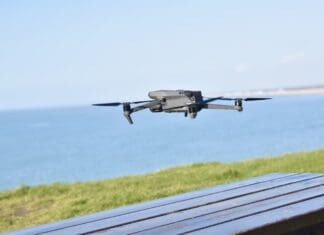This post is also available in:
 עברית (Hebrew)
עברית (Hebrew)
NATO recently announced the creation of Cyber Operations Center as part of an overall effort to update and adopt a more expansive and efficient command structure. The decision to integrate cyber warfare into NATO’s command marks a departure from its historical defensive stance in this field.
NATO has been operating within the cyber domain for over a decade at locations like the NATO Cyber Range and the Estonian Cyber Defense Center of Excellence. NATO Secretary-General Jens Stoltenberg said: “We are now integrating cyber effects into NATO missions and operations to respond to a changed and new security environment where cyber is part of the threat picture we have to respond to,” according to cyberscoop.com.
This could be NATO’s biggest policy shift in decades, especially against Russia, says retired US Air Force Colonel Rizwan Ali, who helped write and implement the decision. He revealed in foreignpolicy.com how this step could affect the way NATO conducts operations and counters threats from abroad. “NATO embraced the use of cyber weaponry in NATO operations.. The more aggressive approach was intended as a strong message, primarily to Russia, that NATO intends to use the cyber capabilities of its members to deter attacks in the same way it uses land, sea and air weaponry,” he added. However, NATO spokesperson said that NATO’s actual cyber policy and activities are and remain defensive and in line with international law.
According to newsweek.com, Ali said that the move was a historic development because of how it would be rolled out. When nations have joined NATO they have placed their equipment and crew under the command of a designated NATO commander. In the case of the new cyber command, however, Ali said that nations would retain control over their cyber tools, potentially making integration “an uphill battle for NATO.”
A NATO official told newsweek.com that the alliance had experienced about 380 cyber incidents per month for the first six months of 2017. The official said this number amounted to a 20 percent decrease from last year’s monthly average, showing that “cyber attackers are changing their tactics, and increasingly targeting softer systems, such as personal devices and networks related to NATO.”
NATO recently conducted its annual Cyber Coalition exercise in Estonia. For the first time ever, EU experts and Germany’s own recently formed electronic warfare branch, the Cyber and Information Space Command, helped coordinate the exercise.
U.S. Special Forces commander Army General Raymond Thomas identified the leading cyber threats as Russia and China, who were in talks of developing their own joint cyber defense in October. Both countries have denied hacking the West, and Russia has been extremely critical of what it perceived as U.S. and NATO plan to undermine its national security, but Thomas said it was the U.S.’s turn to “attack” and “exploit” using cyber weapons. He noted, however, that the country’s capabilities still lagged behind. “We have the structure and know-how to dominate in this domain, but it requires a focused effort and repetitions matter,” Thomas said, according to the Defense Department.

























